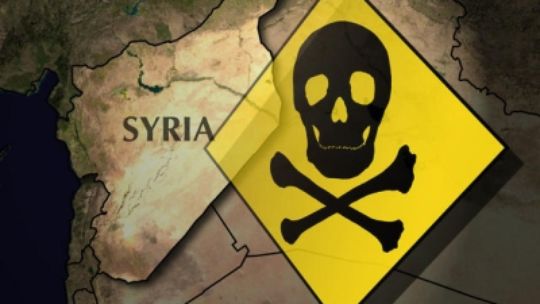It has been a very interesting turn of events these past few weeks, culminating with the US cruise missile bombardment of Assad’s Shayrat Airfield.
What has not been discussed openly in the general media are the Peace Negotiations that had been taking place in Geneva, ending in early March.
During the negotiations, there was consensus that the next phase of the talks would focus on “political transition”, and that the Syrian opposition was discussing points they would want addressed to formalize a negotiated peace settlement. During this time, however, Russia was attempting to unite the two smaller dissident opposition groups, into a single entity. Only a single unnamed “Western Diplomat” said that Russia’s attempt at unifying the opposition was to “destabilize” the talks (Source Reuters). Despite this, there was general agreeement that all parties actually had established a “a clear agenda to pursue a political solution to the country’s six-year-long conflict.”
Later on in March (3/20/17), Syrian Kurds (the YPG) negotiated with the Russians to setup a military base in northwest Syria, to help train fighters, much to the dismay of Turkey. The YPG plays a significant role in US backed operations against the Islamic State, so the YPG would be seen as a crucial ally to both the US and Russia in any ongoing efforts against the Islamic State. Turkey on the other-hand refuses to recognize the YPG as anything other than a “terror” regime in itself, and claims that they were partly responsible for Turkey’s failed coup attempt last year.
(source: ) The YPG is considered the “armed wing” of the Democratic Union Party (PYD), a large opposition party that was founded in 2003. Also around this time (3/20/17), the YPG announced they were growing at a significant rate and had planned to expand their numbers to more than 100,000. (source: Reuters)
On March 30th (3/30/17), the Syrian Kurdish KNC Party (Kurdish National Council), abruptly withdraws from Geneva talks in stating that the talks did not address “federalism and constitutional Kurdish national rights” (Source: Konews)
On April 2nd, the KNC Party completely suspends its participation of all Syrian peace talks.
(Source: ARA News).
Even though the PYD had a larger base of representatives, it was not included in the Geneva peace negotiations, based on pressure from Turkey (NATO Ally) (Source: Reuters).
The KNC Party continues to lose support, because they are largely seen as actively cooperating with Turkey (Source: ARA news).
Exactly two days later (4/4/17) after the KNC withdrew support for the peace talks, Assad forces launched (officially still be determined makeup) sarin gas shells on the town of Khan Sheikhoun, that left more than 80 people dead.
The question remains, why would Assad carry about such a brazen attack on the World Stage, two days after peace talks broke down with the Kurdish factions? The NY Times, in an article, claims that it was a showing of strength and demoralization against the opposition groups (Source: NY Times).
Given that that the attack was almost deliberately broadcast on the world stage, and given both international condemnation and major growth in the YPG faction, this seems very unlikely. If Assad had the capability this entire time, to repeatedly carry out attacks in such a deliberate fashion, why wait until now and only in such a judicious fashion?







